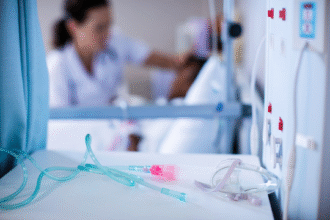Poliomyelitis (Polio): Acute Care, Rehabilitation, and Recovery
There is no antiviral cure for polio. Management focuses on timely supportive care to protect breathing and swallowing, relieve pain and spasms, prevent complications, and begin rehabilitation that restores function while avoiding overuse injury.
- Care Goals by Phase
- Immediate Priorities in Suspected Polio or Acute Flaccid Paralysis (AFP)
- Acute Supportive Care
- Airway, Breathing, Circulation (ABC)
- Pain, Spasm, and Comfort
- Positioning, Splinting, and Skin Protection
- Prevent Common Complications
- What to Avoid
- Rehabilitation and Recovery
- Post‑Polio Syndrome (PPS)
- Medications: What Helps and What Doesn’t
- Prevention: Vaccination and Hygiene
This guide is for general education and does not replace professional medical care. Polio is a notifiable disease—follow local public health guidance for testing, isolation/precautions, and contact tracing.
Care Goals by Phase
- Prodromal/non‑paralytic phase: treat fever and pain, maintain hydration and nutrition, avoid strenuous exertion and intramuscular injections.
- Acute paralytic phase: protect airway and ventilation, prevent aspiration, position and splint safely, manage pain/spasm, monitor for autonomic instability and complications.
- Recovery and long‑term: individualized rehabilitation, orthoses and assistive devices as needed, energy conservation, and prevention of contractures and falls.
Immediate Priorities in Suspected Polio or Acute Flaccid Paralysis (AFP)
- Arrange urgent medical evaluation; collect stool (two specimens 24–48 h apart, ideally within 14 days of weakness onset) and throat sample per public health protocol.
- Implement standard and contact precautions; enhance hand hygiene and safe waste handling.
Acute Supportive Care
Airway, Breathing, Circulation (ABC)
- Monitor work of breathing, oxygen saturation, and blood gases when indicated.
- Provide ventilatory support early if bulbar or respiratory muscle weakness is suspected (non‑invasive or invasive ventilation per clinician judgment).
- Suction secretions and use airway clearance techniques; humidify air as needed.
- Swallowing assessment for bulbar involvement; modify diet/texture or use enteral feeding to prevent aspiration.
Pain, Spasm, and Comfort
- Analgesia (e.g., acetaminophen; NSAIDs if not contraindicated) for myalgia and headache.
- Gentle muscle spasm management; avoid deep tissue massage during acute pain. Consider short‑term muscle relaxants under supervision if severe.
Positioning, Splinting, and Skin Protection
- Maintain neutral alignment; support joints in functional positions (e.g., ankles around 90°) to prevent contractures.
- Turn and reposition regularly; use pressure‑relieving surfaces to prevent pressure injuries.
- Early use of resting splints/orthoses as advised by rehabilitation specialists.
Prevent Common Complications
- Aspiration pneumonia: strict swallowing safety and airway management.
- Deep vein thrombosis (DVT) in immobile patients: mobility as tolerated; consider prophylaxis per risk.
- Bowel and bladder care: prevent retention/constipation; manage urinary infections promptly.
- Autonomic instability (bulbar disease): monitor heart rate, blood pressure, fluids/electrolytes.
What to Avoid
- Strenuous exercise and fatiguing therapies during the acute phase.
- Unnecessary intramuscular injections or invasive procedures when avoidable.
- Unsupported claims of “nerve‑nutrient” medications—no drug has proven to regenerate motor neurons in polio.
Rehabilitation and Recovery
Begin when fever has resolved, pain is controlled, and new weakness has stabilized.
Early Rehabilitation
- Gentle, pain‑free range‑of‑motion (ROM) to preserve joint mobility; progressive positioning and stretching.
- Non‑fatiguing strengthening: short bouts with ample rest; stop if increased pain or prolonged fatigue occurs.
- Occupational therapy for activities of daily living (ADLs), splinting, and adaptive techniques.
- Speech‑language therapy for bulbar involvement (swallowing/voice); nutrition support as needed.
Assistive Technology and Orthoses
- Ankle‑foot orthoses, knee‑ankle‑foot orthoses, or spinal supports to optimize alignment and gait.
- Mobility aids (canes, crutches, walkers, or wheelchairs) to reduce fall risk and conserve energy.
Return to Activity
- Pace and plan: energy conservation, task simplification, and planned rest periods.
- Aerobic re‑conditioning with low‑impact activities (e.g., water‑based therapy) under professional guidance.
Post‑Polio Syndrome (PPS)
Years to decades after acute polio, some survivors develop new/worsening weakness, fatigue, pain, cold intolerance, or breathing/sleep issues.
– Management focuses on pacing, assistive devices, optimizing sleep (screen/treat sleep apnea), pain control, and individualized, non‑fatiguing exercise. Avoid overuse of weak muscle groups.
Medications: What Helps and What Doesn’t
- No approved antiviral or neuroregenerative drug reverses motor neuron loss in polio.
- Use analgesics, antispasmodics, and sleep aids judiciously for symptom control.
- Treat intercurrent infections and manage comorbid conditions (e.g., sleep apnea) proactively.
Prevention: Vaccination and Hygiene
- Vaccination is essential: complete routine polio immunization and boosters per local schedules (IPV; OPV in specific public health settings).
- Hand hygiene, safe water/sanitation, and avoiding exposure during outbreaks reduce transmission.
This guide is educational and not a substitute for clinical care. Follow clinician and public health guidance for diagnosis, treatment, rehabilitation planning, and vaccination.






